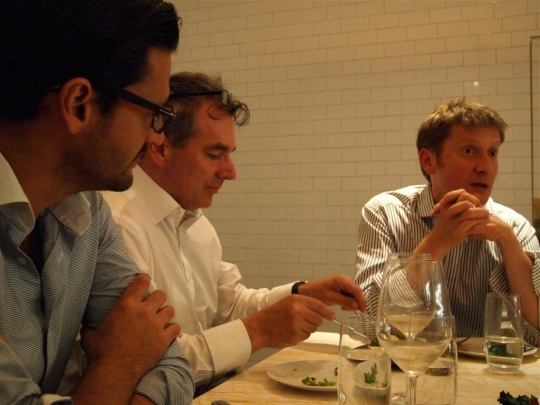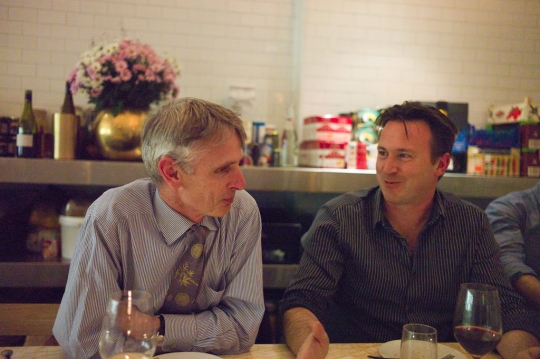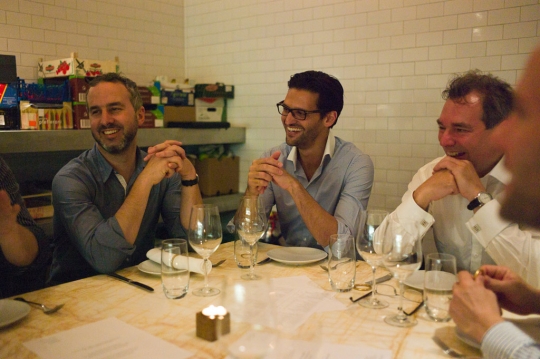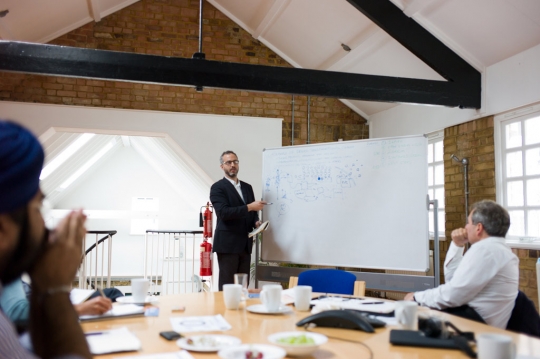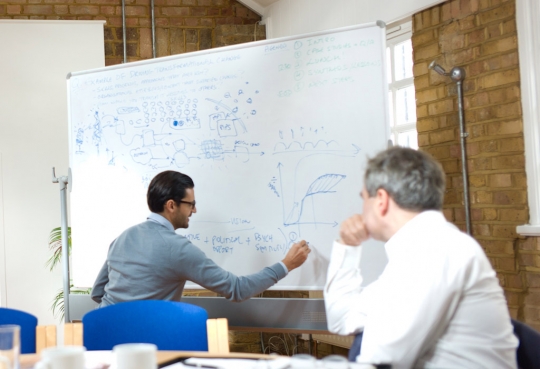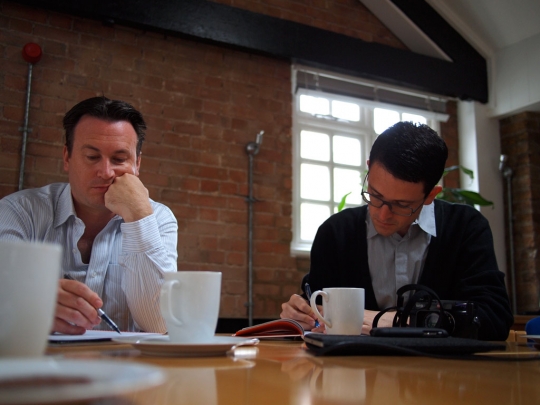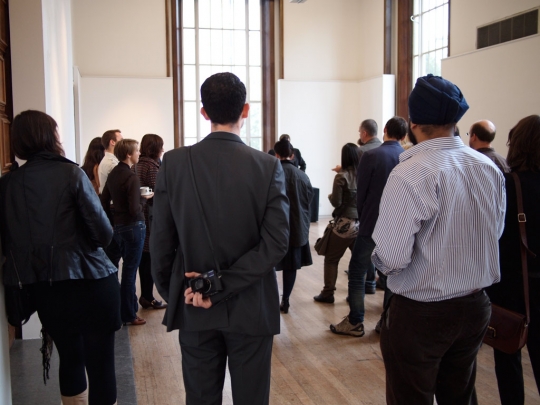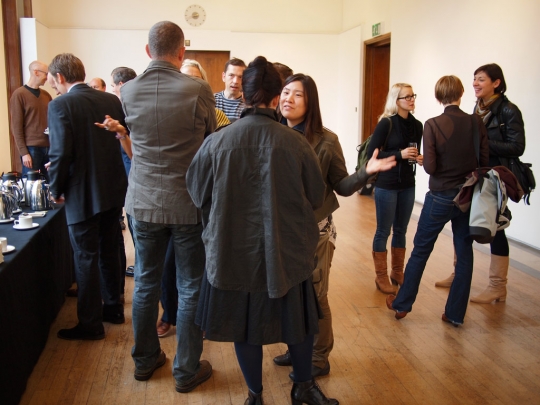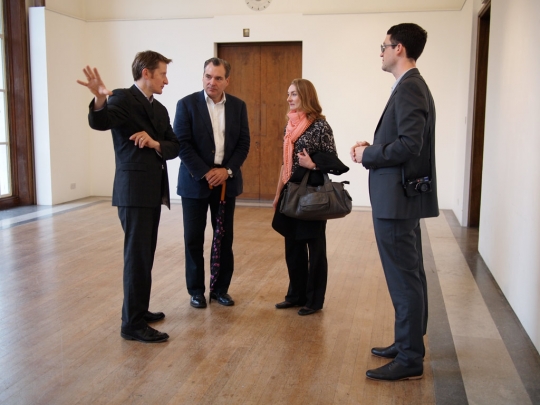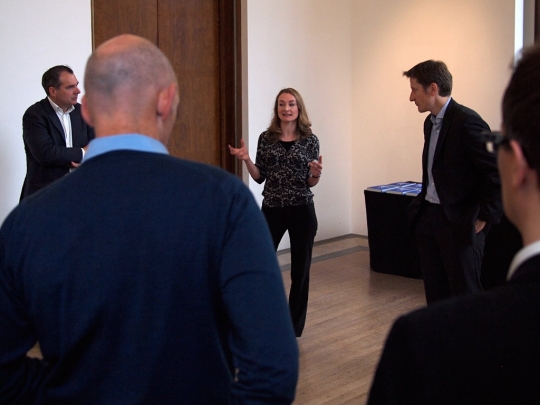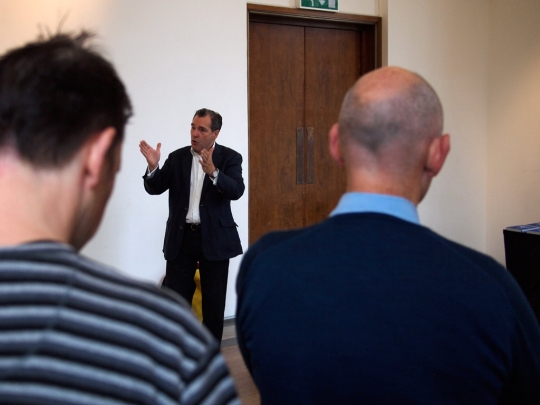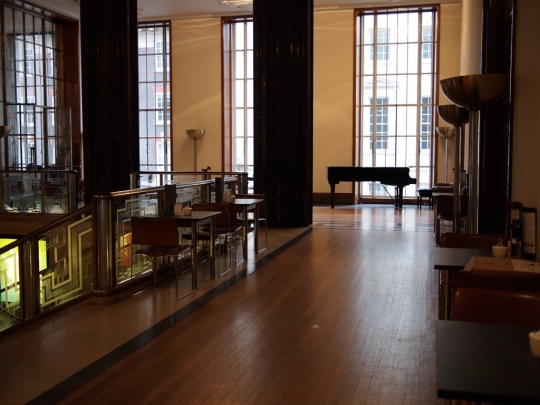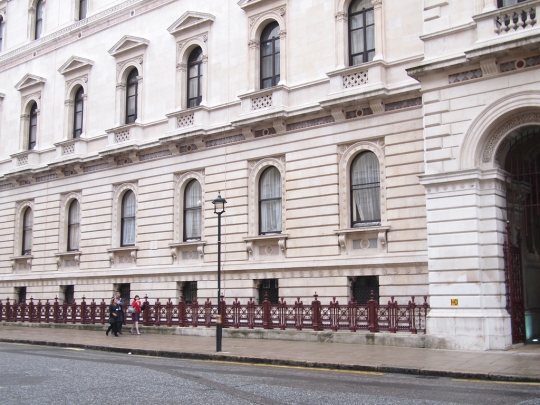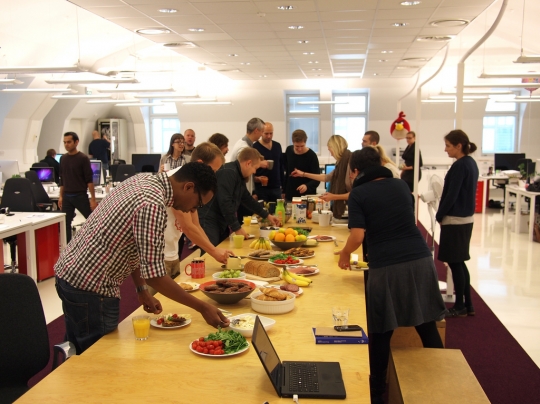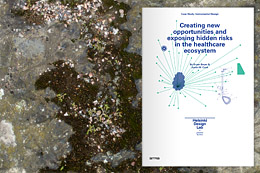This week's diaries look much the same as last week's. Another launch event for the HDL In Studio book, but this time in London.
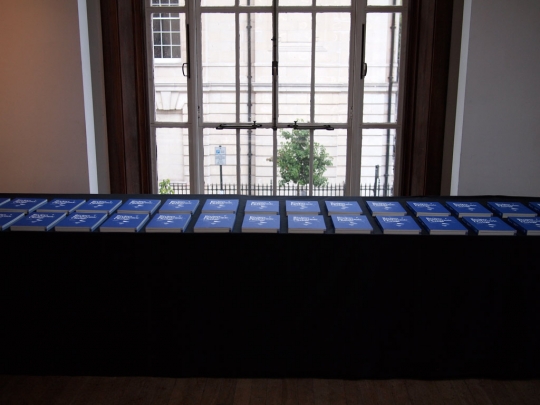
HDL In Studio books waiting to be launched.
Before the launch though, Bryan, Marco and I take part in a roundtable on 'getting systemic change done'. We'd jointly organised the event with E3G, who hosted it at their Southwark HQ. We actually started on Monday night, pulling most of the participants together for dinner. (We often like to use this tactic of the-dinner-the-night-before; it breaks the ice in a natural, convivial way rather than through some dreadful exercise in which people are forced to suggest what kind of animal they would be if indeed they were an animal. It also enables people to tentatively pitch a starting position and rehearse some of the conversation. And it means you can hit the ground running in the morning. Plus, it's dinner.)
And Tuesday was excellent. Participants included Alejandro Litovsky from Earth Security Initiative, Sam Bickesteth from Climate and Development Knowledge Network, Kipper Blakely from Social Investors, 00/The Hub's Indy Johar, E3G's Nick Mabey, Malini Mehra from Centre for Social Markets, Peter Sharratt from Deloitte, and Dimitri Zhengelis from Cisco/LSE Cities. It was a long but fruitful day, with the morning spent presenting and comparing case studies, and the afternoon spent poring over the common ground.

We banned Powerpoint for this session, but made a small exception for Alejandro's diagram.
With much of the group talking about inspirational change projects around climate change, sustainability and government, often from the context of exerting change from 'outside' a system, I decided to present a contrast, talking about my work at the BBC, around the iPlayer on-demand media service. This was a form of design work conducted from deep inside an organisation; sometimes instinctive, sometimes tactical, sometimes strategic.

Notebook sketch of iPlayer 'architecture of the problem'.
This preparatory sketch from my notebook, scribbled over breakfast, really represents the tip of the iceberg in terms of design of both context and product. I transferred the diagram to the whiteboard as I told the story, in order to give a sense of how messy, complex and multi-dimensional this embedded design work can be. I never thought of it as "strategic design" at the time, and indeed though it's quite different to much of the work now, there are many shared elements—not least as these services do represent a form of systemic change, albeit with different purpose.
Ultimately, this was a demonstration of understanding 'the architecture of the problem', as we would now call it, or how contemporary media works as a system (see some earlier thinking about how contemporary media works) and how that connects to organisations and culture. This was beyond editorial concerns; that the design of media systems and organisations themselves was the strategic act that would alter the greater system.
Indeed, though it was a deliberate choice as contrast, what was interesting in the morning's discussion was seeing how much commonality there was between case studies and discussions. The others round the table presented some fascinating projects, ranging from the UK's Green Infrastructure Bank to The Hub project, via case studies from South Africa, India, Thailand, UAE, Argentina and of course Finland.
Much to chew on, and we're looking to develop that and other discussions over the next few months. As this territory is yet to be coherently mapped, we draw a lot from these conversations.
We launched the HDL In Studio book at the Royal Institute of British Architects (RIBA) on Wednesday morning. We had a good gathering for coffee and korvapuusti (Finnish cinamon buns, sourced from the Nordic Bakery in Marylebone via Bryan!).
Marco gave an introduction and hosted a discussion with Peter Sharratt, an architect and sustainable development leader now working at Deloitte, and Marianne Guldbransen, Head of Design Strategy at the UK's Design Council.
Our books disappeared faster than the korvapuusti, which is surely a good sign.
As a self-indulgent sidenote, it was a particular pleasure to be back at RIBA. When I was at the BBC, based at Broadcasting House down the road, we would often use the place for awaydays and meetings of all kinds; plus, it was a favourite 'hiding place' from my team when I needed to get some concentrated work done. (Sorry team.) It's a wonderful space.
After the launch, we hot-foot it across town to Whitehall, accompanied by NESTA's Laura Bunt, to visit the UK government, with whom we swapped notes in another fascinating, thought-provoking session. This was followed by lunch and more productive note-swapping (a theme of the week) at the Institute for Government in Carlton Gardens.
The rest of the week was spent back in Helsinki, keeping various projects ticking over. I gave a talk at Fjord Helsinki on Friday morning (thanks for the invite, Fjord!) on various aspects of our work. It was good to see their team, and their space. Their regular Friday morning shared-breakfast-at-long-table-plus-talk will be something I'll take into our conversations at Sitra, concerning our future workspace.
I also met a local researcher (via Demos Helsinki—ta!) who we'll ask to unpack some food supply chains for us. I've been working on a briefing document around food culture in Finland, and a diagram laying out just how, say, a hot dog emerges on a Helsinki street corner late one night will probably be particularly interesting.
Justin and Bryan have been knee-deep in re-launching the Low2No website (Low2No is one of our key 'systemic change' projects, predicated on building a new neighbourhood in Helsinki.) Do take a look and have a poke around; there's lots of new material and a sharper design to help you find it (which will be familiar to users of this site.) We're starting to carefully pick apart the difference between the block and the model (watch for some forthcoming writing on this 'hook/trojan horse' approach) as well as some curated contributions unpacking the idea of sustainable cities in general.
For instance, read the essay by Federico Parolotto and Francesca Arcuri of Mobility in Chain on sustainable mobility. I had the pleasure of working with Federico in last year's 'zero-carbon Finland' HDL studio, and it's always interesting to hear Mobility In Chain's thoughts on these issues.
Finally, Marco has been hard at work setting up our third major project area, alongside HDL and L2N. Known internally as 'Exchange' at the moment, we'll reveal more of this as it emerges, but suffice to say it should test a new and important angle for our work. Pretty exciting if it comes off. More later.

